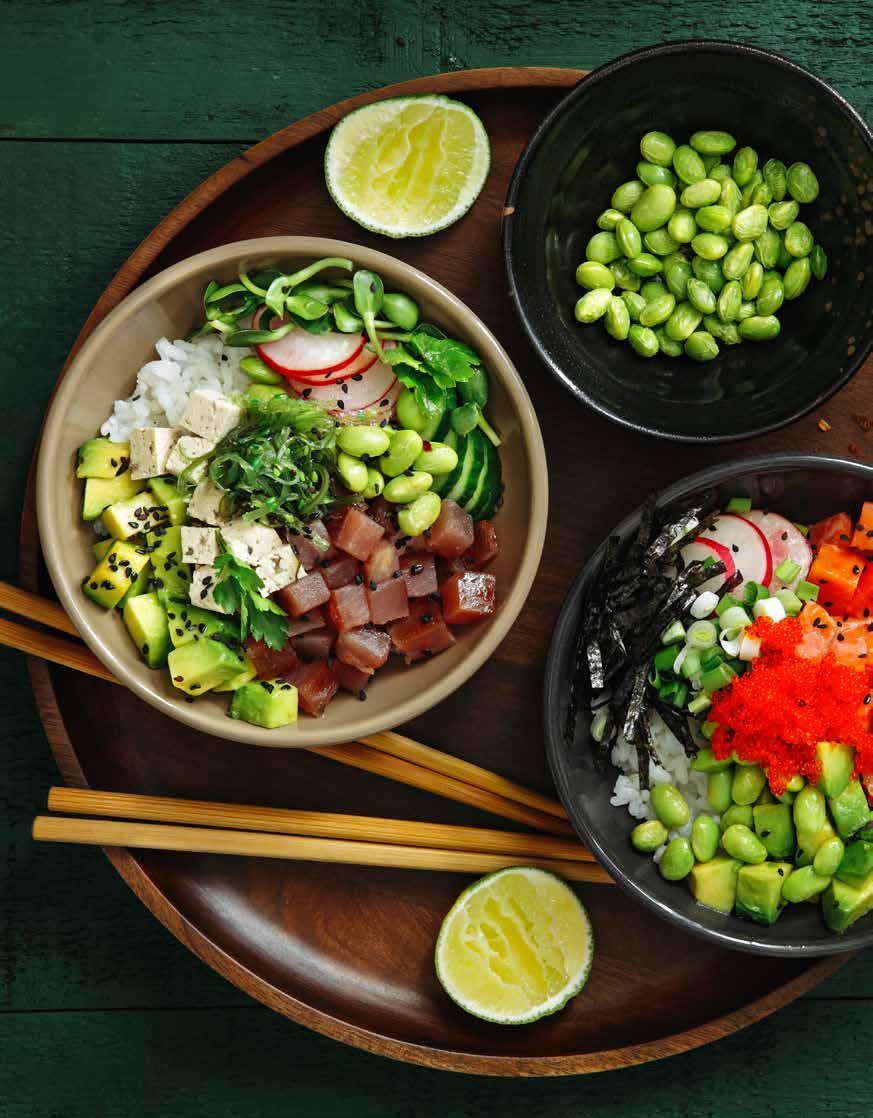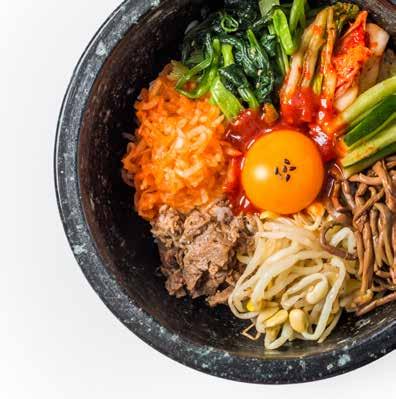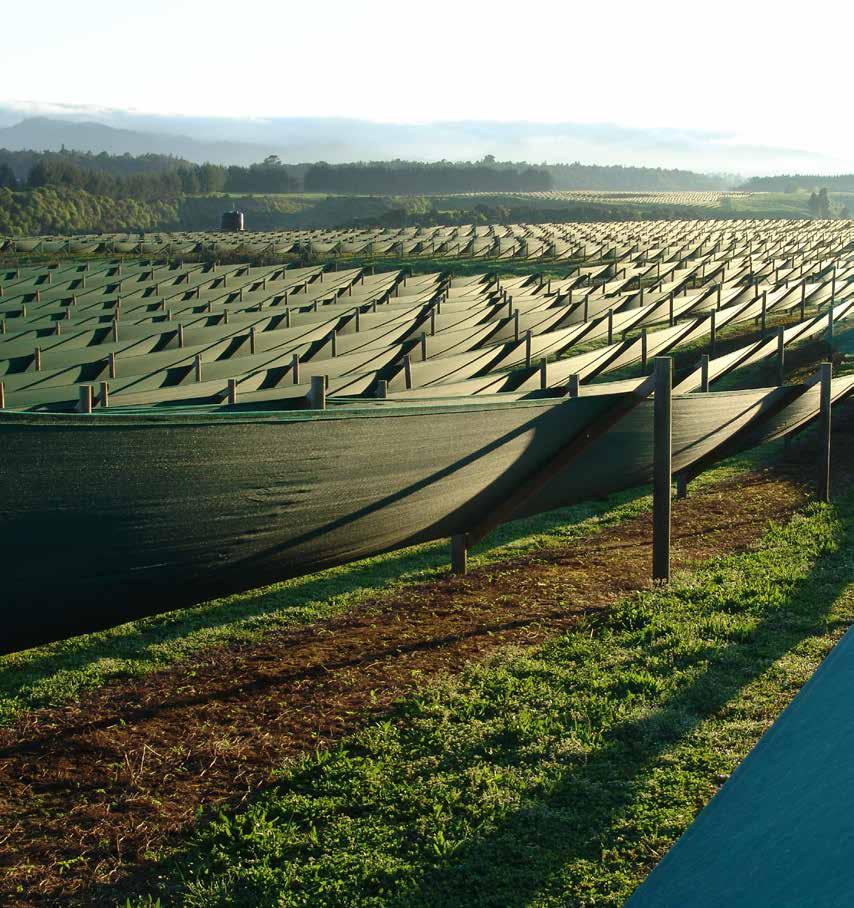
3 minute read
SUPER BOWLS
by Taylor Whitelock
In my career as a chef, I’ve had a few people tell me that they have a hard time eating healthy because they find it bland or boring. I’m pretty sure that if these folks could just tuck into a bowl meal, they would find out with their very first bite that “healthy” can also mean “delicious.”
Advertisement
Bowls have become massively popular in the last few years. The #bowl hashtag has been used well over 3.2 million times on Instagram, usually accompanying gorgeous, colourful meals.
No matter what you call them—power bowls, Buddha bowls, bibimbop—bowls are actually the exact opposite of bland and boring. They’re incredibly versatile. They’re great for families with picky eaters, or when you have some vegetarians and some meat eaters in your group. And they offer the perfect opportunity to explore different dressings, herbs and spices that you might not have used in the past.
Bowls are generally based on some kind of grain (most often warm), which makes up about a quarter of the meal. I always keep easy-to-use grains in my pantry. For those who still haven’t tried it, quinoa is as good as steak for getting protein. It provides all nine essential amino acids (the ones the body doesn’t naturally produce) and it is similar to rice in that it can take on all kinds of flavours. I also love to work with whole-wheat couscous. It’s a pasta, so beware, gluten-intolerant folks. Other grain options are barley, rice, or noodles.


A protein makes up another quarter. This can be beans or lentils, eggs, tofu, nuts, fish, or meat. Then the rest is a variety of veggies and/or fruits. Top it off with some fun things for added flavour and crunch. You may notice that these proportions are the same as what Canada’s Food Guide recommends: healthy, but tasty.
One of the coolest things about this bowl movement is that it mirrors the methods used in professional kitchens. You prepare everything ahead of time, then put it all together when you’re ready to eat. Chefs call it “mise-en-place,” a French term that means “everything in place.” Having your fresh veggies, your grain, protein, dressings, and garnish(es) ready ahead of time makes setup for your meals quick and easy.

How to make a Hawaiian poke bowl
Living in Vancouver for a few years, I fell in love with Hawaiian poke bowls (sounds like poke-ay) and those are definitely my go-to. This bowl hits all the different flavour notes on our tongue: the sweet vs. the sour, bitter vs. umami, and is all tied together with the salt and the heat.
All bowl recipes, including this one, are just a technique, not a hard and fast set of rules, and there are limitless ways to get creative. Here’s one of the ways I do poke.
Be sure to buy sushi-grade tuna: this means it’s safe to eat raw. I prefer yellowfin (also known as ahi). Make a simple marinade—I like big Asian flavours like soy, ginger, sesame oil, and rice-wine vinegar—then cut the tuna into chunks and let them marinate in the fridge for at least a few hours. I like it spicy, so I throw in some sriracha as well. No need for salt—the soy has enough. Prep your other ingredients at your convenience.
I start my poke bowl off with warm brown rice. White rice isn’t as nutritious since it has the germ and the bran, the healthiest parts of the grain, removed. I toss my brown rice in a bit of rice-wine vinegar to give it a bit of a bite and seasoning.
I then put the star of the show, the tuna, in the centre of the bowl. After that, I build around it with sliced cucumber, edamame beans (no shells), shaved radishes, mango and avocado. Then top with sliced green onions, sesame seeds, and crispy wontons to bring in the crunch factor.
Sub out brown rice for white? Sure. Add some lime zest instead of vinegar? No problem. Trade mango for papaya or pineapple? Great. The possibilities are endless.
Whatever you do, have fun and make it look as pretty as you can, even if you don’t put it on Instagram. Enjoy!








